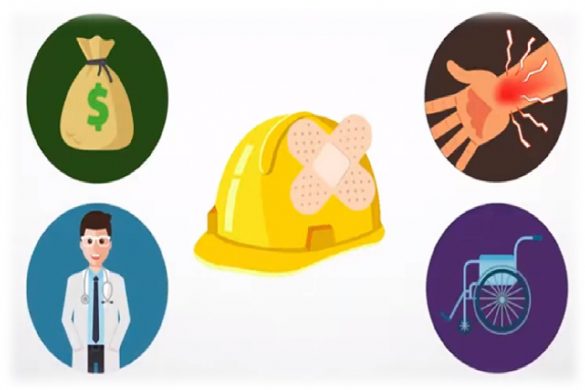Workers Compensation Coverage – If you have employees, you will need to buy workers compensation coverage to protect them. It does not matter if they work part-time, some time or one time. The law says they must be protected from injury while they are doing work for you.
Oh, and if you think you can pay someone on 1099, call him an independent contractor and not have to pay workers comp on him, you may be in for a surprise. There are specific guidelines for who is an independent contractor, and they are narrow. Just because he receives a 1099, he could still be an employee. Ask your agent for help on this one. It could cost you at audit time when actual payrolls are reviewed.
What does Workers Comp coverage work?
Workers Comp coverage pays wage replacement benefits and medical reimbursement if you are injured. It also pays disability payments and a small amount of death payments.
There are two main criteria for the amount that an employer might pay for his workers comp premium. Firstly, there is a rate. Each type of job has a risk factor. Office workers have a lower risk factor than firefighters. Companies evaluate their risk tolerance and ability to market to whichever segment of the business community they may want to approach. Not every company wants to write firefighters, they may only want to write small retail businesses. Once the company determines its preferences, it files a base rate with the state and must stick to that rate. They may also file rate modification criteria which would give them a leeway of up to 25%, for example. Machine safety risk assessment If there is enough premium to warrant it, the workers comp bureau may also evaluate a particular business to see if its losses are better or worse than expected and then assign a modifier of its own, called an experience modification.
How are rates expressed?
The rates are expressed as a number which is a factor per $100 of payroll. So, a rate of 5.00 might be applied to a payroll of $100,000 to get a raw rate of $5000 of premium. This rate might then be further modified up or down depending on the discounts and the experience modification. So with a 25% discount applied by the insurance company and a 20% discount resulting from a good “xmod” the premium would be $3000. If there are losses, you might lose the discount and have a 1.25 x-mod and pay $6250 instead.
State Compensation Insurance Fund
If there is a poor loss record, a lapse in coverage or a type of business considered too risky for most workers comp companies, the court of last resort (in California) is the State Compensation Insurance Fund—SCIF.) Some states only have a SCIF and no private carriers. In any case, SCIF cannot decline to insure a company that wants coverage and complies with the requests, but they can charge and surcharge. Oh, Yes.
At the end of a policy year, the workers comp carrier will perform an audit. This makes sure that they charged the correct premium. They may ask for financial statements to show actual payrolls, or just ask for a simple form to be completed. If you underestimated payroll for the year, expect an invoice. If you overestimated, there will be a refund.
The employer must allow them to proceed with this audit process. If not, the carrier may want to make sure that your actual payroll was not more than your estimated payroll at the beginning of the policy period. So, they add 10% to 20% to the bill just to make sure. it’s legal.
Avoiding claims is critical. Keeping a clean, uncluttered business location with an eye toward what can happen to cause injury is important. Having safety meetings is important. Safety communication with employees is important. Even then, employees do bonehead things and the employer is the one to suffer.
A client of mine had a machine shop with large presses which stamp down on pieces of metal in order to form them. According to standards, such machines are to have a number of safeguards. There must be a yellow line around the machine, within which only the operator is allowed to stand while working the machine. This is to prevent distractions.
Another safeguard is the placement of handholds out of the way of the machinery’s working components so that the machine will only operate when the operator’s hands are clear of the press. If you are a machine operator in a hurry to produce your parts, you may be tempted to circumvent that safeguard. This particular operator taped the safety switch in place so he did not need to place his hands on it and out of the way of the press. His hand was in the way when the press came down. This resulted in a three-fingered operator and a large workers compensation claim. There are many other situations that can result in a claim, so safety should be top of mind for every employer, even those with only clerical staff. An employee can throw out her back by just bending or lifting incorrectly. Instruction on how to safely lift even lightweight items is important.


